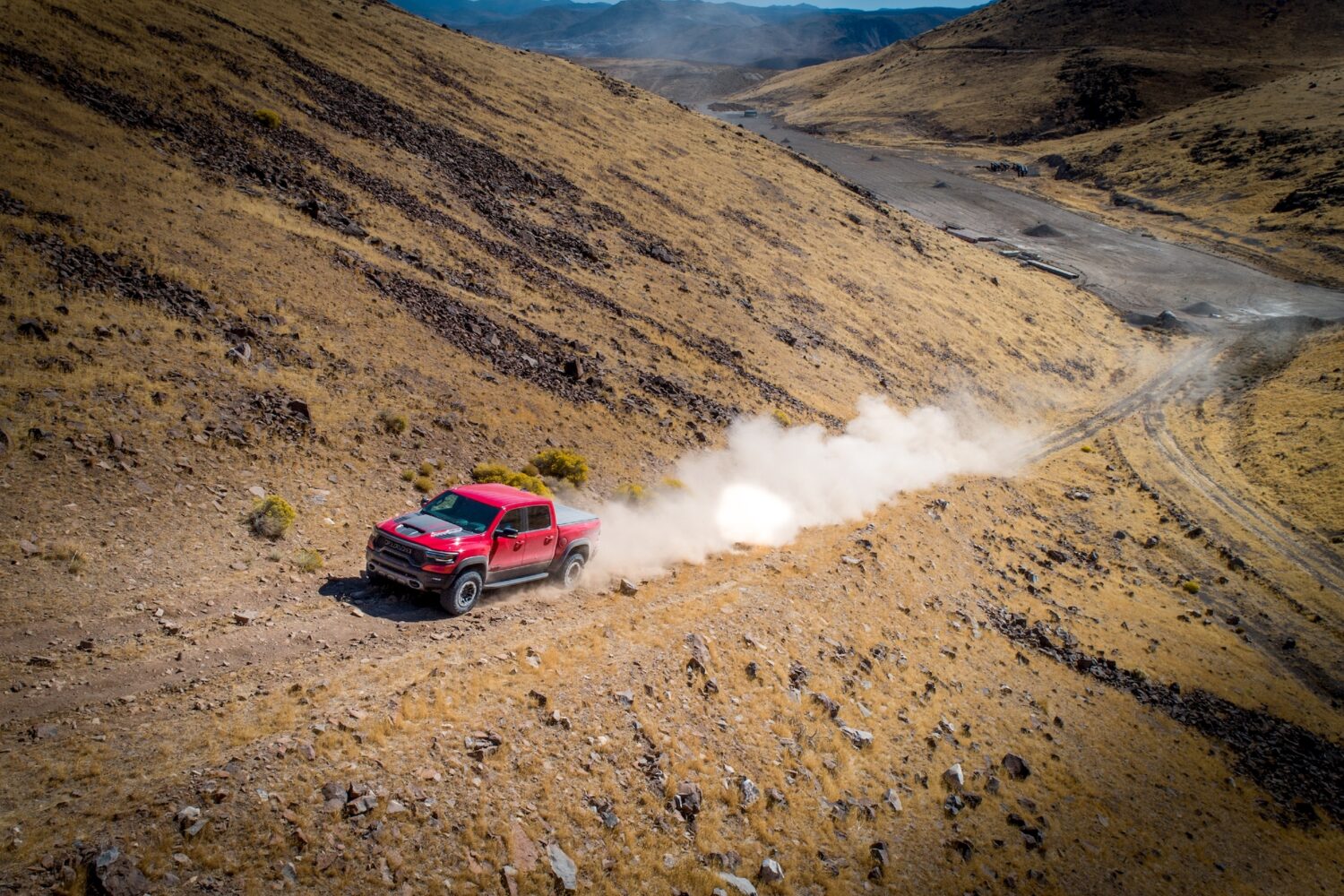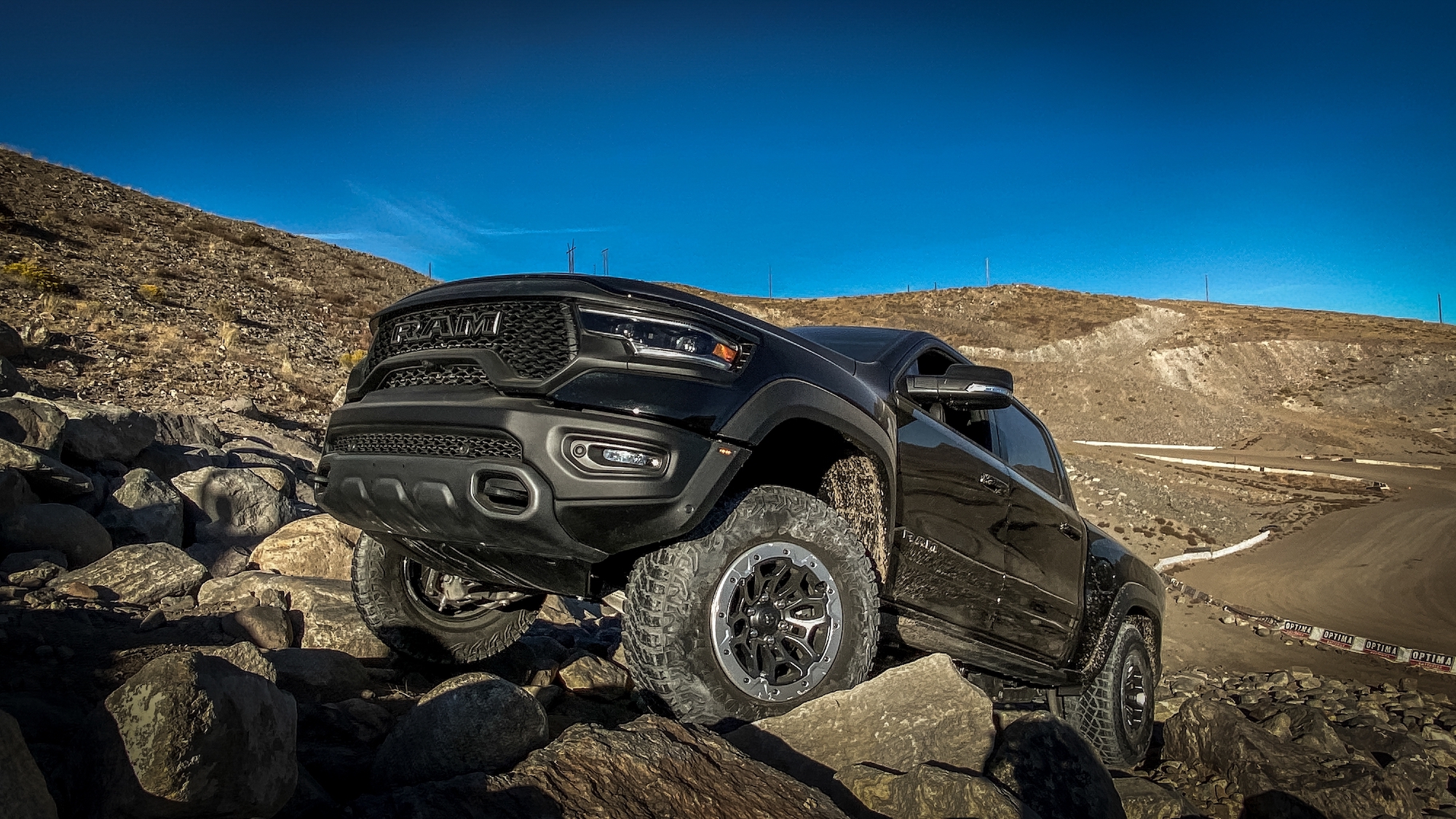So, why are we talking about a 702-horsepower truck for overlanding?
Because you can drive everything from a 9-horsepower Citroen 2CV to a 702- horsepower TRX around the world. Eccentricities can and do exist on either end of the spectrum. More importantly, we find it relevant to test a broad spectrum of off-road vehicles to stay abreast of market trends and emerging technologies—which typically debut on halo models like the TRX first.
The TRX blends OEM reliability with a factory 35-inch tire and the most-impressive and highest-performing suspension we’ve ever driven on a street-legal off-road vehicle—and I used to own a Raptor. Those who want an exotic overlanding experience without having to sacrifice reliability, serviceability, and dependability may want to take a closer look at the TRX. We’re looking at those Tacoma owners who fit long-travel suspension kits.

Despite its size, the 2021 Ram 1500 TRX excels in almost all terrain that it can fit through. We were particularly impressed with the altered throttle mapping, which comes by way of the TRX’s adjustable drive modes which made controlling the massive amounts of torque from the supercharged V8.
Is it good off-road?
This isn’t going to be the type of vehicle that sees technical, rock-bashing trails. It’s a highly specialized piece of equipment with a macro lens for a photographer, something immensely fun to play with in the right scenario. You will never be able to skull-drag this down the Rubicon Trail (its size precludes it), but when the conditions are just right—an open road in the desert—it is hard to imagine a more enticing vehicle to drive.
Admittedly, most of our off-road experience with this vehicle is doing just that (going fast), but we’ve also had the chance to take it on trails littered with medium-sized rocks that are terror upon any suspension system. We can definitely report that due to the adaptive suspension, the TRX is certainly more comfortable than we expected off road.
So yes, it is phenomenal off road, as long as it fits.
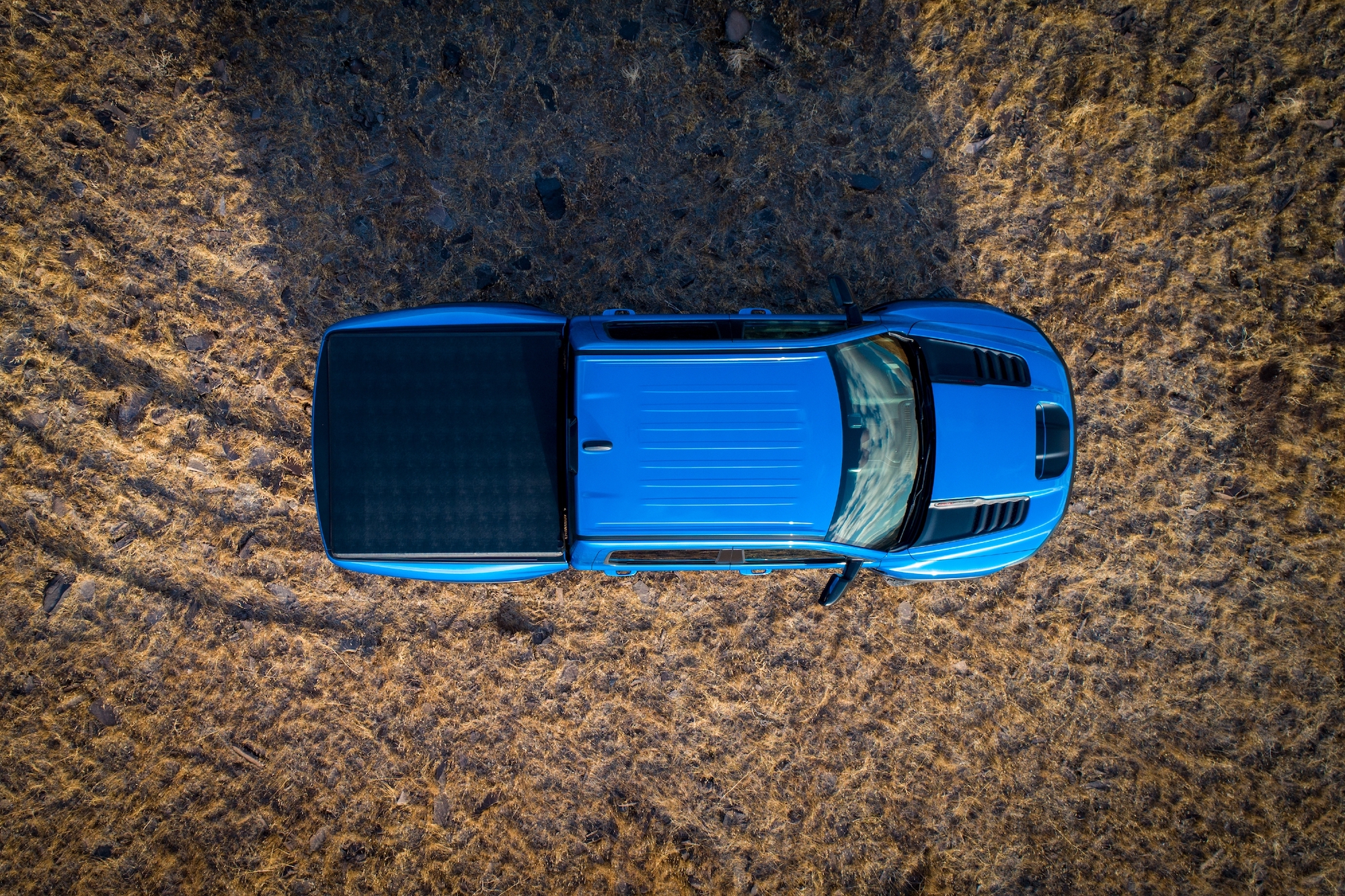
The hourglass shape of the 2021 Ram 1500 TRX is unmistakable, offering an additional 8 inches of width over a standard RAM 1500.
How about the payload? Is it enough for overlanding?
The biggest issue for factory go-fast trucks like the Ford Raptor and their applicability to overland has always been a measly payload capacity—our 2018 Ford Raptor had a payload of around 950 pounds, which didn’t leave much room for modifications after two Americans and a full-suite of camping equipment.
You’re never going to get massive payload out of a softly sprung long-travel vehicle, but the Ram TRX has a maximum payload of up to 1,310 pounds, which may not sound like a huge amount, but when you think about it, it’s actually a significant increase. That’s the weight of a Go Fast Camper or AT Overland Habitat when compared to the Raptor’s payload.
We also like the rear five-link coil-sprung suspension architecture over the Raptor’s archaic leaf-springs. The TRX’s setup will be much easier to swap spring rates or to potentially add a complementary airbag to supplement your vehicle’s payload.
The TRX has enough payload for us not to single it out, but overlanders always want more. Luckily, Ram makes vehicles just for that, with payloads that exceed the curb weight of a TRX.
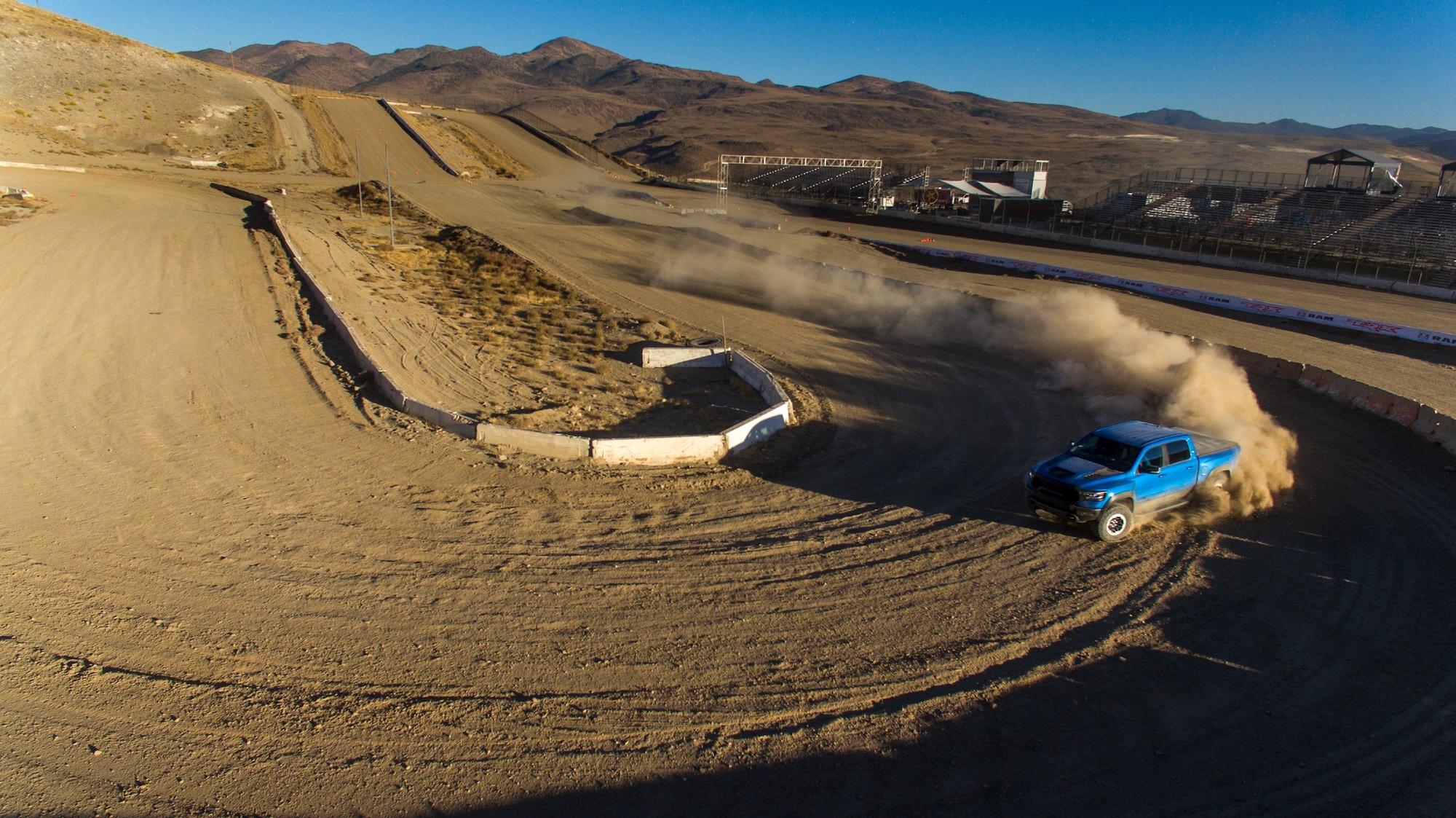
Putting the Ram 1500 TRX on an off-road race track isn’t something every auto manufacturer is willing to do. For us, it was a huge testament to the durability of the truck. We inspected press vehicles that had been beaten to death on this track for over a week. The verdict? Other than light rubbing on the top of the fenders from continued compression, the TRX took the abuse with joy.
How fast is it? Will it make my eyeballs melt?
Equipped with 702 horsepower and launch control, the TRX is capable of accelerating to 60 in less than 4.5 seconds, but that’s not a true measure of the speed this truck is capable of. Weighing in at 6,300 pounds, there’s a lot of mass to get moving no matter which way you look at it. But on the highway, the TRX is frankly effortless. And when the pavement gets twisty, the TRX is nothing short of a unique experience—never lacking for power, with sticky 35-inch all-terrain tires and an 8-inch increase in track width keeping the vehicle planted.
Off road, there’s almost too much power, but we won’t count that against the TRX. So yes, it will make your eyeballs melt on the dirt.

The 2021 Ram 1500 TRX features an extended-length reinforced rear trailing arm suspension with massive rear coil springs (the longest fitted to a production vehicle, ever). The Bilstein Blackhawk suspension is capable of making adjustments to valving in fractions of a second.
Is it built well? But is it better than a Toyota?
Ten years ago, you wouldn’t have heard me say that (Fiat) Chrysler products might have the best fit, finish, and engineering on the market. But today, I think they’re light-years ahead of any other manufacturer. Where Ford seems to be concerned with offending the fewest with their designs, Ram doesn’t seem to be afraid to make bold choices. Simply put, the TRX feels like it belongs in rarified air and has an interior to suit.
When equipped with the TRX Level 2 package, the TRX shares the same luxurious interior with the 1500 Limited, with Alcantara and dry carbon fiber replacing the tacky western stitching on the Limited.
The intoxicating supercharger whine does permeate the otherwise quiet and luxurious cabin, but we wouldn’t have it any other way—without the 6.2L supercharged Hemi under the hood, the TRX just wouldn’t be what it is. Kudos to the folks at Ram for giving the customer what they want.
It’s better than a Toyota in every way other than historical brand reliability.

2021 Ram 1500 TRX features Alcantara and dry carbon interior accents, with Ram’s massive 12-inch vertical screen. Paddle shifting makes controlling the impressive ZF 8HP transmission an absolute breeze. We love the steering wheel—our favorite ever fitted to a pickup.
What’s the TRX like to drive?
The TRX has a unique duality to it—it’s exotic yet practical, terrifying yet confidence-inspiring.
Whereas the Raptor seemingly now feels relatively common (at least where we live), you cannot throw a stick without hitting one (for good reason); the TRX pushes the envelope into uncharted territory.
The TRX benefits from a stiffer-than-usual chassis combined with an incredibly advanced suspension capable of adjusting itself every 20 milliseconds. This is all based on a myriad of interlinked data sources, including vertical wheel travel, allowing the Bilstein Blackhawk dampeners to progressively apply anywhere from 20 to 1,000 pounds of dampening force. All of this results in an almost spooky ability to keep the vehicle level on both pavement twisties and planted in rugged terrain at speed. When dropping down the mountain from Lake Tahoe on the way to Wildhorse Pass Motorsports Park, you could be forgiven for forgetting that you aren’t in a sports car. It’s that good on the tarmac.

The 2021 Ram TRX is a rally car for the road with a pickup bed. Flat handling and a responsive drivetrain paired with over a foot of suspension travel and 6,000 pounds create one of the more unique automotive experiences available.
But can you jump it?
We personally verified this for our readers several times by taking it out on the off-road race track at Wildhorse Pass Motorsports Park.
The TRX knows how to boogie and even has a special bit of software called jump detection mode, which disconnects the clutches in the transfer case to reduce driveline shock when the TRX finally decides to come back to earth.
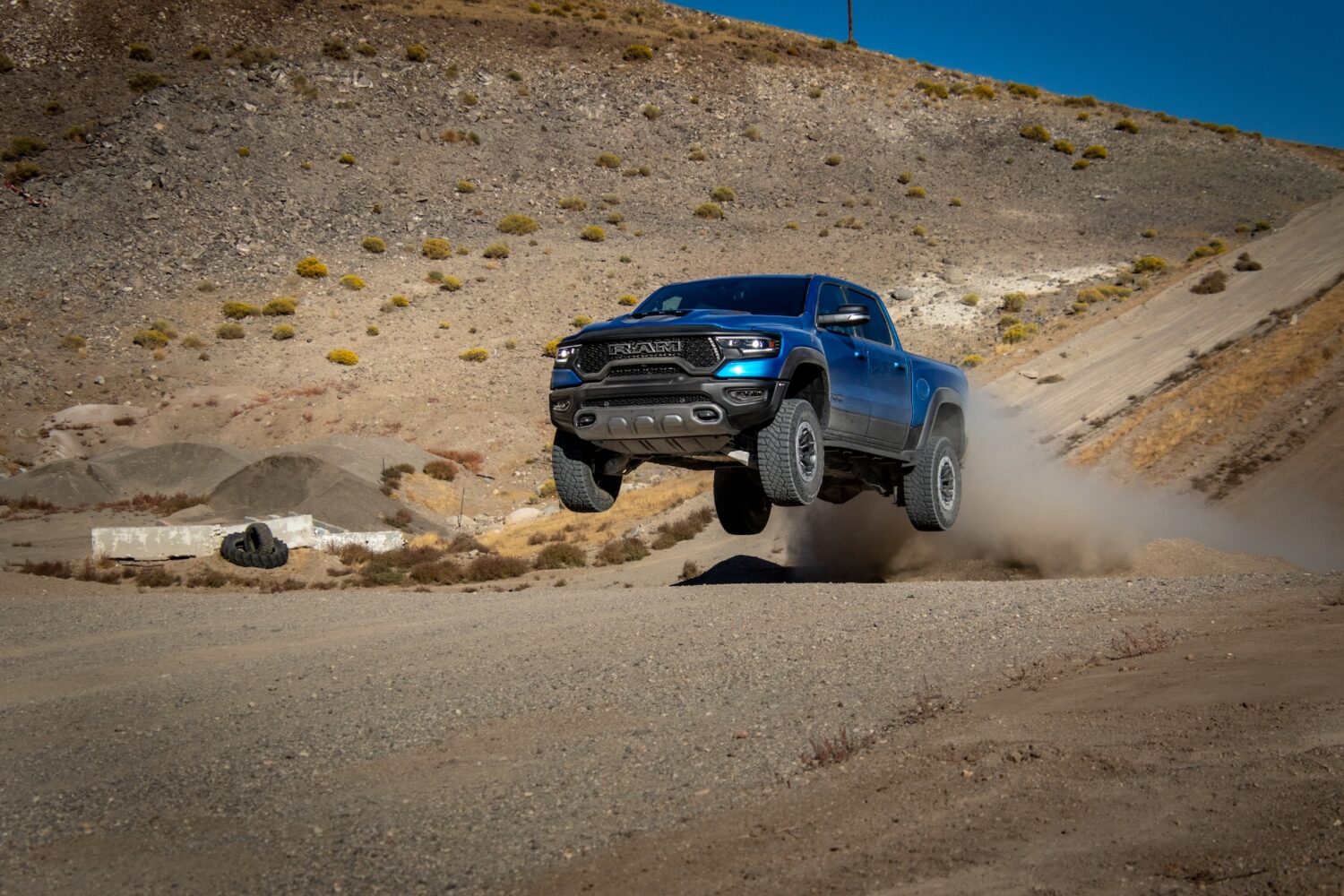
The hardest part of hucking a $100,000 pickup is getting the driver comfortable with it. Out of the box, the TRX is incredibly confident once the wheels leave the ground.
Is it too big for the trail?
It depends where you live, but it is not a small car—the TRX is 2 whole inches wider than the Ford Raptor. This is not the vehicle I’d want to take through the trees on the east coast, but I couldn’t imagine a better machine for those wide-open stretches of dirt highway that we find so often in Arizona.
What kind of fuel economy does it get?
IDK. It’s $90,000, and it has a supercharged 702 horsepower V8. It sounds great, though.
Should you buy it?
The RAM TRX has planted itself firmly on our “buy” list here at Expedition Portal. Let’s be clear, while there isn’t a reason that you couldn’t drive it around the world, it’s probably not the best choice for an overlander for a myriad of reasons, including fuel economy, payload, and size. But for those with a bank account to justify it, you’re not going to have more fun on four wheels straight out of the dealership.
